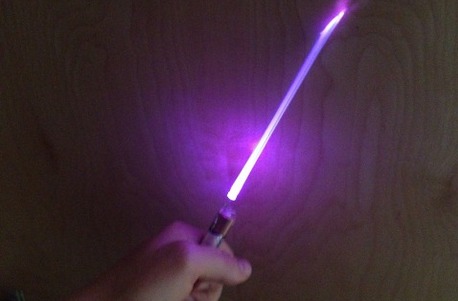Make a battery powered circuit
Build a simple battery-powered circuit using a battery, wires, an LED or bulb, and a switch to learn how electricity flows with adult supervision.



Step-by-step guide to make a battery-powered circuit
How To Make a Simple Electric Circuit | Working Model School Science Project
Step 1
Lay out all your materials on a clear workspace so you can see everything.
Step 2
Ask an adult to come help and stay with you for the whole project.
Step 3
Use the wire stripper or scissors to carefully strip about 1 centimeter of insulation off the ends of the two insulated wires.
Step 4
Hold the LED and find the longer leg (positive) and the shorter leg (negative).
Step 5
Wrap one lead of the 220 ohm resistor around the longer LED leg so the resistor is connected in series with the LED.
Step 6
Secure the resistor and LED connection by twisting or taping the wires so the bare metal stays touching.
Step 7
Attach the red wire from the 9V battery snap to one terminal of the slide switch and secure it with tape.
Step 8
Attach another insulated wire from the other switch terminal to the free end of the resistor that is connected to the LED.
Step 9
Connect the black wire from the 9V battery snap to the shorter leg of the LED and tape the connection securely.
Step 10
Check every connection to make sure they are tight and that no exposed wires are touching each other except where they should.
Step 11
Ask the adult to help you flip the switch to ON and watch the LED light up.
Step 12
Share a photo and a short description of your finished circuit on DIY.org.
Final steps
You're almost there! Complete all the steps, bring your creation to life, post it, and conquer the challenge!


Help!?
What can I use if I don't have a 220 ohm resistor, 9V battery snap, or a wire stripper?
If you don't have a 220 ohm resistor use a nearby value like 330 ohm, substitute the 9V battery snap with alligator clips or a 6×AA battery holder to connect to the red/black wires, and carefully strip about 1 cm of insulation with scissors instead of a wire stripper.
Why doesn't my LED light when I flip the switch, and how do I fix it?
If the LED stays off, check the 9V battery voltage, confirm the resistor is wrapped around the longer LED leg (positive) and the black wire from the battery snap is taped to the shorter leg (negative), ensure the red wire goes to the slide switch then to the free end of the resistor, and retape any loose stripped wires to prevent poor contact or shorts.
How can I adapt this project for different ages?
For younger kids have an adult pre-strip wires and pre-twist/tape the resistor-to-LED connection so the child can assemble and flip the slide switch, while older kids can solder connections, use a breadboard, or add extra LEDs to explore series and parallel wiring.
How can we extend or personalize the finished circuit?
Personalize it by mounting the LED and slide switch in a decorated cardboard case, try different colored LEDs or add additional LEDs in parallel each with their own 220–330 ohm resistor, or replace the slide switch with a pushbutton for a momentary circuit.
Watch videos on how to make a battery-powered circuit
How to Build a Simple Electrical Circuit — At-Home Science Activity for Kids
Facts about basic electricity and circuits
⚡ Electricity needs a closed loop called a circuit to flow — open the loop and the current stops instantly.
🔌 A simple switch just opens or closes the path for electricity — flip it and the light goes off or on.
🔋 Alessandro Volta invented the first battery (the voltaic pile) in 1800 — the start of portable electricity!
🕒 Individual electrons move slowly, but the electrical signal travels near the speed of light, so lights seem to turn on instantly.
💡 LEDs use much less energy than incandescent bulbs — often around 90% less for the same brightness.
How do you build a simple battery-powered circuit with an LED and switch?
What materials and tools do I need to make a battery-powered LED circuit?
What ages are suitable for building a simple battery-powered circuit?
What safety tips should I follow when doing a battery-powered circuit activity with children?


One subscription, many ways to play and learn.
Only $6.99 after trial. No credit card required



